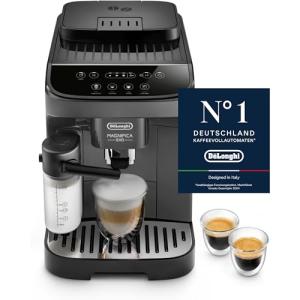
Ground Bean Coffee Machine
Add a review FollowOverview
-
Founded Date mars 1, 1916
-
Sectors Ingénierie
-
Posted Jobs 0
-
Viewed 6
Company Description
See What Retro Bean To Cup Coffee Machine Tricks The Celebs Are Using
The Retro Bean-To-Cup Coffee Machine: A Blend of Nostalgia and Modern Convenience
Coffee lovers frequently discover themselves divided in between the attraction of standard developing approaches and the convenience used by modern machines. In this age of technological developments, the retro bean-to-cup coffee machine uses an elegant service that marries nostalgic aesthetics with contemporary performance. This article will check out the features, benefits, and factors to consider of owning a retro bean-to-cup coffee machine.
Table of Contents
- Introduction
- Features of a Retro Bean-To-Cup Coffee Machine
- Advantages of Choosing Retro
- Comparative Analysis: Retro vs. Modern Coffee Machines
- Leading Models in the Market
- Frequently Asked Questions about Retro Bean-To-Cup Coffee Machines
- Conclusion
1. Intro
The principle of a bean-to-cup coffee machine is simple: it takes fresh coffee beans, grinds them, brews them, and gives a cup of coffee– all at the push of a button. This development has actually changed the method we enjoy our day-to-day caffeine repair, integrating benefit and freshness. The retro bean-to-cup coffee machine, identified by its classic design and innovative innovation, appeals to customers who appreciate both looks and functionality.

2. Features of a Retro Bean-To-Cup Coffee Machine
Secret Features
| Function | Description |
|---|---|
| Built-in Grinder | Newly grinds whole beans for ideal flavor. |
| Customization | Alternatives for strength, cup size, and developing time. |
| Timeless Design | Vintage aesthetic appeals that enhance cooking area decor. |
| Milk Frother | Automatic or manual frothing for lattes and cappuccinos. |
| Easy Maintenance | Detachable parts for easy cleaning. |
| Instinctive Controls | User-friendly user interface with programmable settings. |
Noteworthy Components
- Grinder: The heart of the machine, capable of grinding beans to different coarseness levels.
- Water Tank: Stores fresh water, typically removable for easy filling.
- Brewing Unit: Handles the developing process, which can be personalized based on individual preferences.
3. Benefits of Choosing Retro
Reasons to Opt for a Retro Bean-To-Cup Machine
| Benefit | Description |
|---|---|
| Visual Appeal | Includes an elegant vintage touch to any cooking area. |
| Convenience | Take pleasure in fresh coffee without the need for numerous gadgets. |
| Sustainability | Decreases waste by utilizing whole beans and frequently includes environment-friendly elements. |
| Affordable | Gets rid of the need for coffee shop check outs, saving cash with time. |
| Elegance | Impresses guests with its unique style and top quality brew. |
The retro style can evoke memories while also acting as a discussion starter, making it a fantastic addition to homes intending for a cohesive vintage theme.
4. Comparative Analysis: Retro vs. Modern Coffee Machines
Understanding the differences between retro and contemporary machines can help consumers make notified choices.
Contrast Table
| Function | Retro Bean-To-Cup | Modern Bean-To-Cup |
|---|---|---|
| Style | Vintage, classic aesthetic. | Streamlined, minimalist designs. |
| Technological Features | Fundamental but effective; some might do not have sophisticated tech. | Cutting-edge innovation with smart features. |
| Rate Range | Generally more budget friendly. | Can be significantly more pricey for high-end models. |
| Personalization | Typically uses basic customization. | Advanced personalization for each aspect of brew. |
Both alternatives have their merits, and the very best choice eventually depends upon personal choices and way of life.
5. Leading Models in the Market
Several retro bean-to-cup coffee machines stick out for their design and performance. Below is a selection of some of the most popular designs:
| Model | Cost Range | Secret Features |
|---|---|---|
| De’Longhi ECAM35020 | ₤ 800 – ₤ 1,000 | Integrated milk frother, personalized shot size. |
| Gaggia Brera | ₤ 400 – ₤ 500 | Compact design, user friendly interface. |
| Smeg ECF01 PBEU | ₤ 500 – ₤ 700 | Elegant pastel colors, retro design, and ease of usage. |
| Philips 3200 Series | ₤ 900 – ₤ 1,100 | Touchscreen interface, multiple coffee styles. |
These machines carry out very well while also acting as gorgeous additions to any kitchen area setup.
6. FAQs about Retro Bean-To-Cup Coffee Machines
Q1: How do I clean up a retro bean-to-cup coffee machine?
A: Most machines come with removable parts that can be easily washed or placed in the dishwasher. Regular cleansing of the grinder and developing unit is necessary to preserve ideal efficiency.
Q2: Do retro machines use up more counter area?
A: While some designs may have a bulkier design due to retro looks, numerous are created to be compact to fit within contemporary cooking area spaces.
Q3: Can I use pre-ground coffee in these machines?
A: Typically, bean-to-cup machines are best suited for whole beans. However, some might enable the use of pre-ground coffee, however it’s necessary to check the maker’s standards.
Q4: Are retro machines more pricey than contemporary ones?
A: Prices can vary significantly, but typically, retro machines can be more budget friendly than high-end contemporary bean-to-cup choices.
Q5: Are retro machines simple to utilize?
A: Yes, most retro machines are designed with easy to use user interfaces and uncomplicated controls, making them available even for newbies.
7. Conclusion
In an age when coffee developing innovation is ever-evolving, the Retro Bean To Cup Coffee Machine bean-to-cup coffee machine becomes a delightful blend of fond memories and performance. It caters not just to coffee lovers searching for a glowing developing experience but likewise works as an impressive statement piece for any cooking area. Whether going with aesthetic appeal or exceptional coffee quality, the retro bean-to-cup coffee machine offers the best of both worlds. With numerous alternatives available in the market, finding the ideal machine is simply a cup away.

